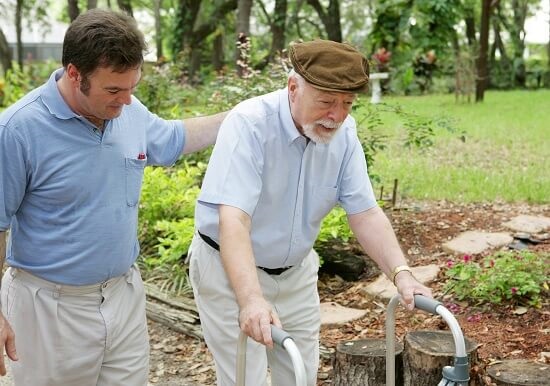 A disorder of the brain and central nervous system, Parkinson’s Disease results from a lack of dopamine production in the brain which leads to damage, largely in the motor cortex. People with Parkinson’s disease will often develop symptoms that impact their motor functions, including:
A disorder of the brain and central nervous system, Parkinson’s Disease results from a lack of dopamine production in the brain which leads to damage, largely in the motor cortex. People with Parkinson’s disease will often develop symptoms that impact their motor functions, including:
- Tremors
- Muscle rigidity and contracture
- Difficulty writing
- Bradykinesia (slowing of movements)
- Changes in speech
- Balance problems
- Loss of autonomic functions like smiling and blinking
Additionally, non-motor specific symptoms might accompany progression of the disease, including changes in mood and personality, loss of smell, hallucinations, continence issues, difficulty sleeping, neck pain, and more.
The treatment and management of Parkinson’s have come a long way in recent decades, especially with the development of medicines that help to mimic or act like dopamine in the brain. New therapies and caregiver education resources are also benefiting the lives of people with Parkinson’s disease and their care networks.
Don’t miss these helpful tips for managing Parkinson’s disease for you or a loved one:
Tackling Daily Tasks Successfully
As the progression of the disease leads to further and further degeneration in the brain, Parkinson’s sufferers may feel robbed of their independence - no longer being able to drive, requiring a mobility aid to get around, even having trouble with basic daily tasks like eating and dressing. Empowering them with the tools and equipment they need to be able to maintain some independence and still feel self-reliant can go a long way in boosting confidence and health outcomes:
Specialty Flatware - hand tremors can make holding flatware and eating without making a mess very difficult. That’s where flatware specially designed for patients with Parkinson’s comes into play. The best spoons for people with Parkinson’s, for example, offer integrated motion-sensing technology which helps stabilize the spoon in the event of a tremor. They are often lightweight with wide handles to make gripping and holding them easier too.
Dressing Aids - buttoning shirts, putting on shoes, these basic dressing tasks seem simple, but for someone with balance issues and tremors brought on by Parkinson’s, they can become discouraging and time-consuming. Dressing aids can play a powerful role in helping Parkinson’s sufferers out - tools like shoe horns, button hooks, and dressing sticks can make it much easier to put on clothes and shoes to get ready for the day.
Toileting Tools - continence issues like having an urgency to urinate, frequent urination, and needing to get up multiple times during the night to use the bathroom can be extremely taxing on a person with Parkinson’s and their caregiver(s). Helpful equipment like bedside commodes can make it easier for someone to go without having to make a trip to the bathroom each time (and to delay use of adult briefs or catheters). Toilet seat raisers and handrails in the bathroom can also provide support when sitting and standing to help avoid imbalances and potential falls.
Medicine Organization - chronic illnesses like Parkinson’s disease may come with their own trove of medications and treatments, each often with its own very specific directions. For example, some Parkinson’s medication comes in the form of a patch (Neupro) which needs to be replaced daily but only on certain parts of the body avoiding the same body part within a 14 day span. Other oral medication has specific time restrictions around when it can and cannot be taken with food. Staying on top of it all can be flabbergasting. People with Parkinson’s and their caregivers will want to be overly coordinated in this respect by using medicine organizers, charts, alerts and daily reminders to stay on top of medicine schedules.
Fall prevention is also a key aspect to managing Parkinson’s as balance issues, tremors, and muscle rigidity increase risk of falling. People with the disease and their caregivers should take proper fall prevention measures including:
- Clearing clutter and large objects from common walkways
- Installing grab bars and handrails around tricky areas like stairways and the bathroom
- Keeping mobility aids nearby and accessible
- Placing fall mats by the bed and common sitting areas
- Keeping lighting bright, accessible, and consistent across rooms
There are so many helpful tips, tools, and equipment out there for people living with Parkinson’s and those who help provide care for them. Many can be found online or at your local pharmacy, or you can check with your local chapter of the Parkinson’s Foundation, or with area senior centers and aging programs. A little help can go a long way!


Comments